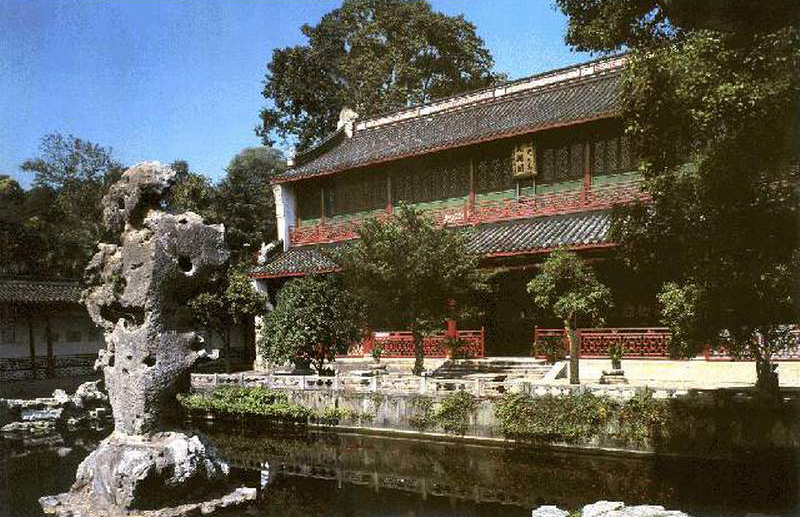On the west side of Gushan Branch lies the remains of the temporary palace of the Qing Emperors and the Wenlan Pavilion, the famous imperial library in the area south of the Yangtze River. Completed in 1783 during the the reign of Emperor Qian Long, it is one of the seven libraries to treasure Siku Quanshu (the complete libraries of four treasuries) of the Qing Dynasty. The Pavilion was burnt down in 1861 during the reign of Emperor Xian Feng), and rebuilt on the original site in 1880 during the reign of Emperor Guang Xu). The Pavilion of Imperial Tablet and a hall, Tai Yi Fen Qing Shi were subsequently added, and the main constructions we see today, were built during the reign of Emperor Guang Xu. As the only pavilion existing of the three libraries in the Jiangnan region, it was appraised as, and included in the national key cultural relics protection unit in 2001 by the State Council.
Wenlan Pavilion is a typical Jiangnan courtyard. All the constructions in the courtyard, i.e. pavilions, corridors, pools, bridges and artificial rockeries are connected, and designed to present a compact, delicate and characteristic style. Entering the main entrance, you will see a terrace on the Lion & Elephant Artificial Mountain, with a delicate path in the middle of the mountain leading to a single-storey building. In the pool stands a bizarre rock, named "Peak of Immortal", which is the gem among the artificial rockeries of the West Lake. On the southeast side stands a tablet pavilion inscribed with the poem and imperial edict of Siku Quanshu issued by Emperor Qian Long of the Qing Dynasty. In the east stands the Pavilion of Imperial Tablet inscribed with three characters: Wen Lan Ge by Emperor Guang Xu of the Qing Dynasty. In imitation of Tianyi Pavilion (a time-honored library in Ningbo), Wenlan Pavilion stands in the center just behind the square pool. Outwardly, The Pavilion is a 2-storied structure, but inside is a 3-floor building. The zigzagging corridors are in the west and a gate called Yue Men leading to Tai Yi Fen Qing Shi and Hall of Arhats.
Following the renovations in 1974, 1984 and 1993, another big restoration took place in Wenlan Pavilion in 2006, and later, it became an important scenic site displaying relics and paraphernalia pertaining to Wenlan Pavilion and Siku Quanshu.
